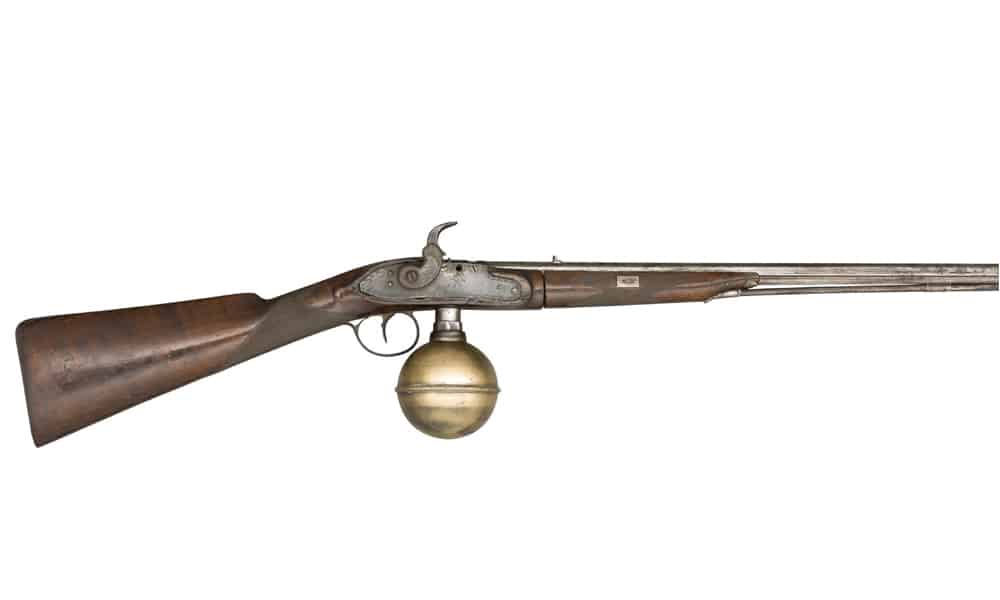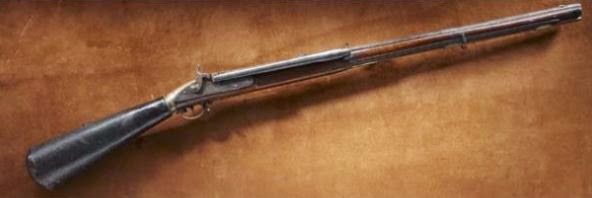A friend swore that Lewis and Clark had a high powered repeating air rifle that fired a large rifle-sized bullet that would punch a hole through a wolf or a 2″ plank of wood 100 yards away. He claimed that it so impressed the Indians they encountered that they went unmolested in truly savage country. Of course I thought he was crazed – then I bothered to look it up. What they had was Girandoni Air Rifle:

‘The Girandoni air rifle was in service with the Austrian army from 1780 to around 1815. Many references to the Girandoni air rifles mention lethal combat ranges of 125 to 150 yards and some extend that range considerably. The advantages of a high rate of fire, no smoke from propellants, and low muzzle report granted it acceptance. It did have problems and was eventually removed from service for several reasons decades after introduction. There was also a version sold to civilians after it was removed from military service. While the detachable air reservoir was capable of around 30 shots, it took nearly 1,500 strokes of a hand pump to fill those reservoirs. Later, a wagon-mounted pump was provided. The reservoirs, made from hammered sheet iron held together with rivets and sealed by brazing, proved very difficult to manufacture using the techniques of the period and were always in short supply. ‘ Wikipedia

‘The rifle was 4 ft (1.2 m) long and weighed 10 lb (4.5 kg), about the same basic size and weight as infantry muskets of the time. It fired a .46[3] or .51[4] caliber ball and had a tubular, spring-fed magazine with a capacity of 20 balls. Some of the weapons were also made using a gravity-fed magazine. Unlike its contemporary, muzzle-loading muskets, which required the rifleman to stand up to reload with powder and ball, the shooter could reload a ball from the magazine by pulling a transverse chamber bar out of the breech which allowed a ball to be supplied to it and which then rebounded back to its original position with the aid of a spring, all while lying down.[5] Contemporary regulations of 1788 required that each rifleman, in addition to the rifle itself, be equipped with three compressed air reservoirs (two spare and one attached to the rifle), cleaning stick, hand pump, lead ladle, and 100 lead balls, 1 in the chamber, 19 in the magazine built into the rifle and the remaining 80 in four tin tubes. Equipment not carried attached to the rifle was held in a special leather knapsack. It was also necessary to keep the leather gaskets of the reservoir moist in order to maintain a good seal and prevent leakage.[6]
The air reservoir was in the club-shaped stock. With a full air reservoir, the Girandoni air rifle had the capacity to shoot 30 shots at useful pressure. These balls were effective to approximately 125 yd (114 m) on a full air reservoir. The power declined as the air reservoir was emptied’
‘The rifle could put a hole through a one-inch pine board at 100 yards. The tubular magazine held twenty-two .46 round balls and the detachable cast-iron buttstock held 800 lbs. psi air of compressed air. It required 1500 strokes of a pump to bring to full charge after which it could quietly and without smoke, fire forty times before losing noticeable air pressure. And it was fairly easy to operate. One can imagine the impression it made. Arguably, this rifle may have been the most important weapon in the opening of the West. (True West)
Absolutely breathtaking.
See Also:
https://truewestmagazine.com/the-amazing-air-rifle-of-meriwether-lewis/
https://en.wikipedia.org/wiki/Girandoni_air_rifle
